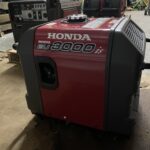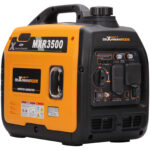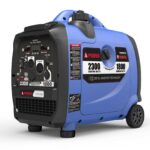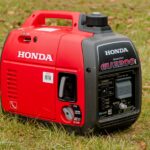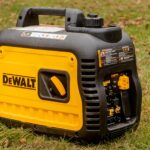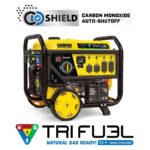A 220v generator is a must-have for anyone looking to power their home in case of an emergency. Whether you need a generator for a power outage, a camping trip, or a construction site, this guide will help you make an informed decision on the right generator for your needs. We will discuss the types of generators and their uses, safety considerations, and the best generator for your home. We will also provide some tips and tricks on how to use and maintain your generator. With this guide, you will be able to make the best decision for your home and be able to enjoy the benefits of having a 220v generator.
Types of Generators

- Portable Generators – typically gasoline powered, these are great for providing backup power when the main power supply is interrupted.
- Standby Generators – these units are installed permanently at a home or business and can automatically provide power when the main power source is interrupted.
- Inverter Generators – these are similar to portable generators but are quieter and more efficient.
- Diesel Generators – these are powerful generators that use diesel fuel to produce electricity.
- Natural Gas Generators – these are powered by natural gas and are more efficient than diesel generators.
Advantages of Using a 220v Generator

| Benefit | Description |
|---|---|
| Cost Savings | Using a 220v generator is more cost-effective than buying multiple smaller generators, as it provides more power for the same price. |
| Power Output | A 220v generator can output up to twice the power of a similar-sized 110v generator, making it ideal for powering larger appliances and equipment. |
| Durability | 220v generators are built to last, with high-quality components and robust construction that stands up to extended use. |
| Safety | 220v generators are safer to use than 110v generators, as they are better insulated and generate less heat. |
| Versatility | A 220v generator is versatile and can be used to power a variety of appliances and equipment, including refrigerators, air conditioners, and power tools. |
220v generators are a great choice for those looking for a reliable, powerful, and cost-effective source of power. They are well-suited to powering appliances and equipment in both residential and commercial settings.
How to Choose the Right 220v Generator
| Factors | Considerations |
|---|---|
| Power | Determine the wattage requirement of the equipment you will be using with the generator. Add up the load of all the equipment to get the total wattage. Add 200-400 watts to the total to cover surges. |
| Fuel Type | Diesel, gasoline, and propane are the three most common fuel types. Consider convenience and availability of fuel, as well as the cost. |
| Size | Determine the size of the generator based on the wattage requirements and the space available. |
| Noise Level | Choose a generator that has a noise level that is acceptable for your environment. |
| Price | Set a budget for the generator before you start shopping. Consider the cost of fuel and maintenance when budgeting. |
| Portability | Think about whether you need a portable generator or if a stationary one is sufficient. |
| Features | Look for features such as low oil shutoff, voltage regulation, and digital displays. |
When choosing a 220v generator, consider the power requirements, fuel type, size, noise level, price, portability, and features. The wattage requirement of the equipment you will be using with the generator should be determined and the load of all the equipment should be added up to get the total wattage. Fuel type should be considered based on convenience and availability of fuel, as well as the cost. The size of the generator should be determined based on the wattage requirements and available space. Noise level should be chosen based on the environment. A budget should be set before shopping and cost of fuel and maintenance should be considered. The portability requirement should be determined and features such as low oil shutoff, voltage regulation, and digital displays should be looked for.
How to Install a 220v Generator

- Choose a suitable location for the generator.
- Check the area for any obstacles and ensure proper ventilation for the generator.
- Lay a concrete foundation or base for the generator.
- Install the generator on the base.
- Install a transfer switch to separate the generator from the power grid.
- Connect the generator to the transfer switch with appropriate wiring.
- Connect the generator to the fuel source.
- Install a battery charger to keep the battery charged.
- Install the exhaust system.
- Set the voltage regulator to the correct settings.
- Test the generator to make sure it is working properly.
Safety Considerations
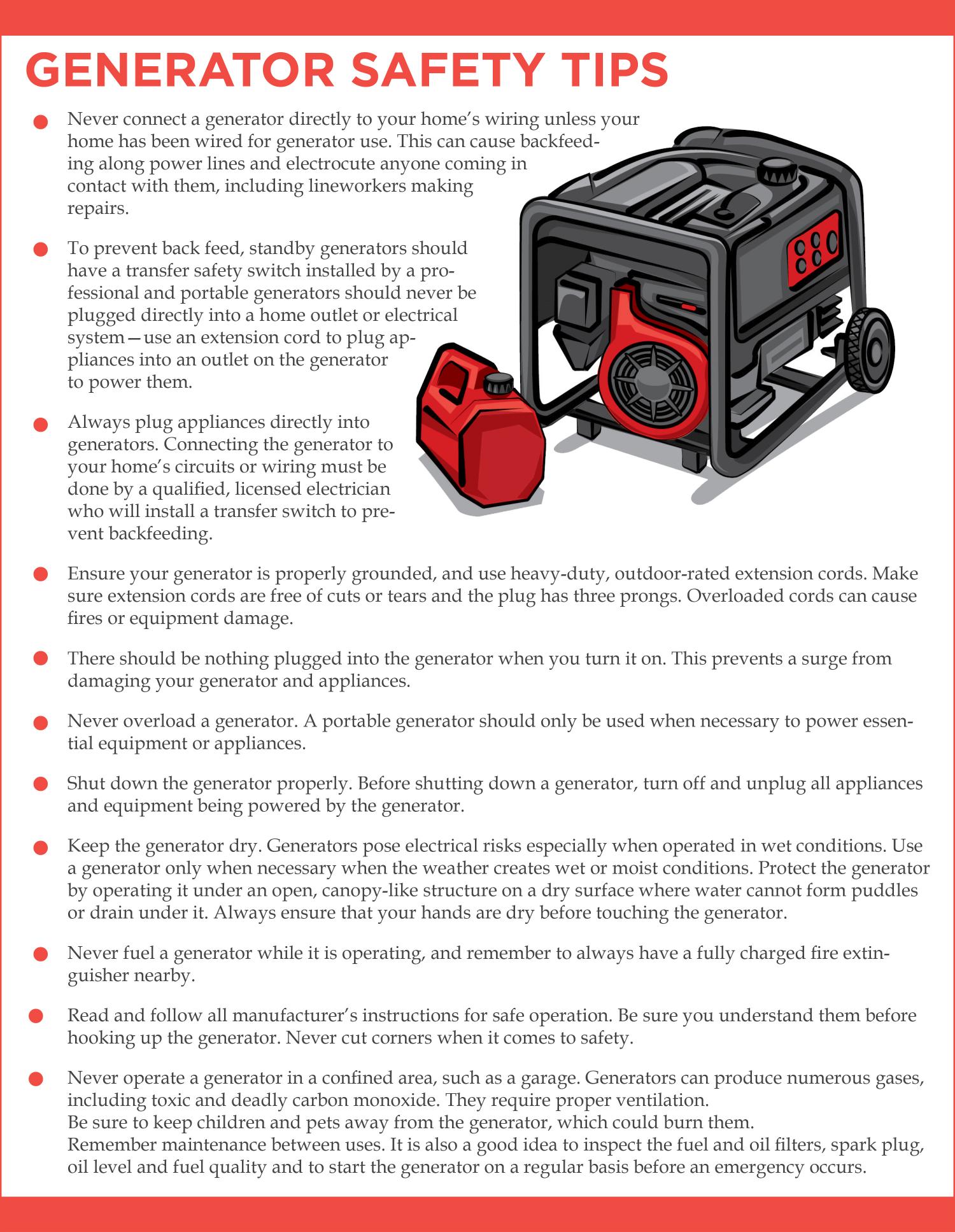
- When using a 220v generator, be sure to read the user manual and safety instructions carefully.
- Do not overload the generator, as this may result in a fire or shock hazard.
- Make sure the generator is properly grounded and connected to a ground fault interrupter (GFI).
- Check the fuel tank and fuel lines regularly for leaks.
- Install a carbon monoxide detector in the area where the generator will be used.
- Do not operate the generator indoors or in an enclosed area.
- Do not touch any exposed wires or connections.
- Do not operate the generator in wet conditions, as this can result in an electrical shock.
Troubleshooting Common Problems

Inspect the fuel supply line regularly for leaks and make sure the fuel filter is clean. Test the oil level of the generator and add oil as needed to maintain the proper level. If the engine does not start, check the spark plug for deposits and check for fuel delivery. Make sure the carburetor is properly adjusted and the air filter is clean. If the generator is producing a low voltage, check the battery and the regulator. Check the voltage output of the generator and use a multimeter to adjust the voltage if necessary. If the generator is producing too much voltage, check the capacitor, the brushes and the field coil. If the generator is running but not producing power, check the wiring and the load. Check the load requirement and make sure the generator is providing the correct amount of power. If the generator is producing power but it is erratic, check the regulator and the wiring. Make sure the wiring is secure and that the regulator is properly adjusted.
Maintenance and Upkeep
| Action | Frequency |
|---|---|
| Oil Change | Every 100 hours |
| Spark Plug Change | Every 200 hours |
| Air Filter Change | Every 500 hours |
| Fuel Filter Change | Every 500 hours |
| Coolant Replacement | Every 1000 hours |
To ensure the proper functioning of the generator, it is important to regularly maintain and upkeep the generator. This includes changing the oil, spark plugs, air filter, fuel filter, and coolant. The frequency of these tasks is outlined in the table above.
Cost of Operating a 220v Generator
The cost of operating a 220v generator depends on several factors, including the type and size of generator, fuel consumption rate, and frequency of use. Generators vary in wattage, with smaller models providing around 2,000 watts, and larger models providing up to 12,000 watts. Larger generators tend to require more fuel, thus increasing the cost of operation. The fuel consumption rate is generally measured in gallons per hour, and can range from 0.5 gallons per hour for smaller generators to up to 6 gallons per hour for larger ones. The frequency of use is also important, as the more a generator is used, the more fuel it will consume and the higher the cost will be.
Other costs associated with operating a 220v generator include maintenance, repairs, and replacement of parts. Regular maintenance is essential to ensure the generator runs efficiently and safely. This includes checking the oil, air filter, spark plug, and other parts regularly, as well as changing the oil and spark plug on a regular basis. Repairs and replacements may be necessary if the generator is damaged or malfunctioning. Finally, fuel costs should also be taken into account when calculating the cost of operating a 220v generator.
Frequently Asked Questions
What are the benefits of using a generator with a 220v outlet?
A 220v generator provides a reliable source of power during power outages, allowing you to safely power essential electrical items. It can also provide portable power for camping and other outdoor activities. 220v generators are safer to use than lower voltage models, as they have grounding and double-insulation protection. The higher voltage also allows for greater power output, enabling the generator to power more devices at once. It is also more efficient, as it can produce more power with less fuel consumption.
Is it difficult to install a 220v generator?
The installation of a 220v generator depends largely on the model of the generator and the type of connection required. Generally, the process involves connecting the generator to the main electrical panel, grounding the generator, and ensuring the proper wiring and electrical components are in place. It is recommended to contact a qualified electrician to ensure all safety precautions are taken, and to ensure the proper installation of the generator.
What types of 220v Generators are Available?
220v generators come in a variety of styles and designs, ranging from portable units to stationary units with large power outputs. Portable units are typically powered by gasoline, diesel, or propane and are used for recreational purposes such as camping and tailgating. Stationary models are often powered by natural gas or propane and are used for home and industrial backup power. Inverter generators are also available, which convert DC current to AC current, allowing them to provide clean and stable power suitable for powering sensitive electronic devices.
What safety measures should I take when using a 220v generator?
When using a 220v generator, it is essential to take the necessary safety measures to avoid potential harm. Always use the correct electrical cords and outlets that are compatible with the generator. Make sure the generator is in a well-ventilated area and that the exhaust is directed away from people and buildings. Also, ensure that the generator is plugged in a ground fault circuit interrupter (GFCI). Keep the generator dry and protected from the weather, and never operate it on a wet surface. Finally, wear protective clothing such as insulated gloves and safety glasses to protect yourself from any electrical shocks.
How do I determine the size of generator I need with a 220v plug?
To determine the size of generator you need with a 220v plug, you will need to calculate the wattage of the appliances you need to power. Add up the wattage of each appliance and then select a generator that is rated higher than your total wattage. Some generators are also rated in amps, so you may need to convert watts to amps. A 220v plug requires a generator that is rated at least 5,000 watts with a 30 amp outlet.
Conclusion
A 220v generator is an essential tool for providing electricity in both residential and commercial settings. It is a reliable source of power in emergency situations, as well as for providing steady energy for everyday use. It is important to consider the type, size, and power output of a generator before making a purchase. Knowing the maximum wattage and the required power outlets for the devices you need to power is essential for finding the right generator for your home.

